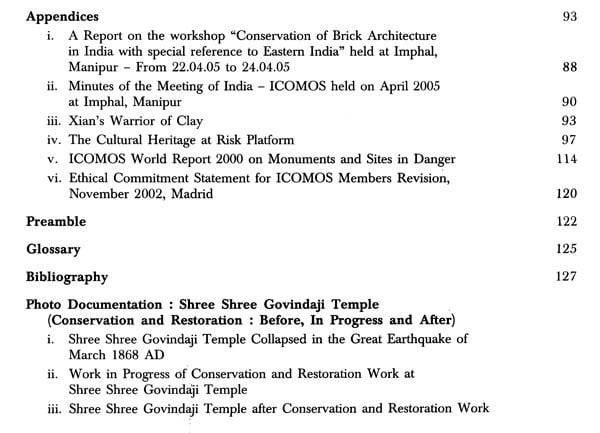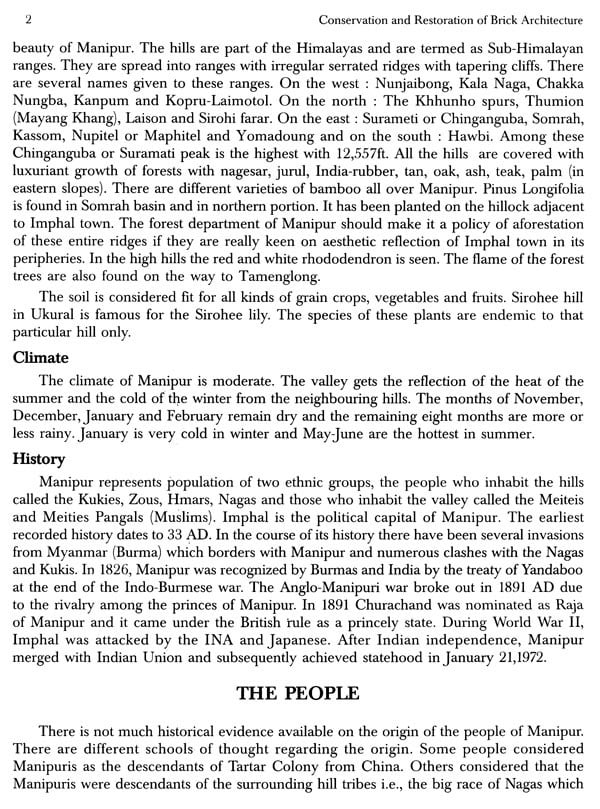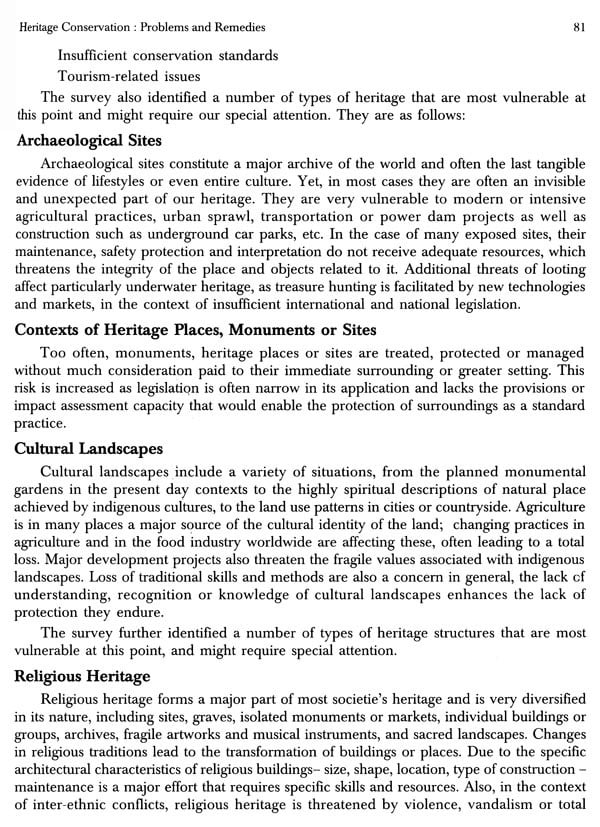
Conservation and Restoration of Brick Architecture- Special Reference to Manipur: North-East India
Book Specification
| Item Code: | AZG302 |
| Author: | S.S. Biswas |
| Publisher: | KAVERI BOOKS |
| Language: | ENGLISH |
| Edition: | 2008 |
| ISBN: | 9788174790880 |
| Pages: | 182 (Throughout Color Illustrations) |
| Cover: | HARDCOVER |
| Other Details | 11.00x9.00 inch |
| Weight | 890 gm |
Book Description
Relevant information about ICOMOS, it’s the have enhanced of welcome addition the scholarly work the conservation on a delicate medium like terracotta, that in the moisture affected region on north-east India.
He has widely travelled throughout the world, leading several high power delegations and also arranged exhibitions and exchange programmes for bringing the cross cultural identity and co-operation between different nations.
ICOMOS, the International Council on Monuments and Sites, is the advisory body for UNESCO on issues concerning the world cultural heritage, in particular the evaluation of monuments and sites that have been placed on the World Heritage List or are under consideration for listing. With more than 6000 members organized in 107 National Committees and 21 International Scientific Committees. ICOMOS is also committed to preservation of our heritage worldwide, wherever monuments, sites or cultural landscapes that are defined by historic buildings are affected. According to the preamble of the Venice Charter (1964), material evidence of our history is at stake: I quote "Imbued with a message from the past, the historic monuments of generations of people remain to the present day as living witnesses of their old traditions. People are becoming more and more conscious of the unity of human values and regard ancient monument as a common heritage. The common responsibility to safeguard them for future generations is recognized. It is our duty to hand them on in the full richness of their authenticity."
In India, the Indian National Committee has accepted to play pivotal role, by providing impetus to the objectives of ICOMOS as a non-governmental organization ICOMOS can identify monuments in danger from a strictly preservation based perspective without political considerations, can bluntly address the absolutely desperate situation facing the historic heritage in many countries of the world, and can detect dangerous trends at an early stage.
**Contents and Sample Pages**














